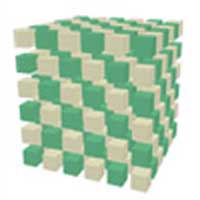 Cube-shaped nanoparticles with thick shells of DNA assemble into a never-before-seen 3-D 'zigzag' pattern that breaks orientational symmetry; understanding such nanoscale behavior is key to engineering new materials with desired organizations and properties.
Cube-shaped nanoparticles with thick shells of DNA assemble into a never-before-seen 3-D 'zigzag' pattern that breaks orientational symmetry; understanding such nanoscale behavior is key to engineering new materials with desired organizations and properties.
Friday, May 17, 2019
Nanoscale sculpturing leads to unusual packing of nanocubes
 Cube-shaped nanoparticles with thick shells of DNA assemble into a never-before-seen 3-D 'zigzag' pattern that breaks orientational symmetry; understanding such nanoscale behavior is key to engineering new materials with desired organizations and properties.
Cube-shaped nanoparticles with thick shells of DNA assemble into a never-before-seen 3-D 'zigzag' pattern that breaks orientational symmetry; understanding such nanoscale behavior is key to engineering new materials with desired organizations and properties.
Physicists found new way to optimize nanoparticles and light interaction
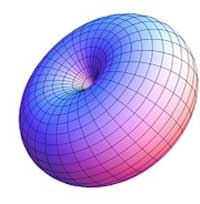 Scientists describe, for the first time, new features of dielectric nanoparticles' optical response using improved method for electromagnetic field analysis that can take into account more complex configurations of bias currents inside the objects. These effects help to better understand the processes in nanoparticles and adjust their behavior for more efficient light control in devices such as nanolasers or sensors.
Scientists describe, for the first time, new features of dielectric nanoparticles' optical response using improved method for electromagnetic field analysis that can take into account more complex configurations of bias currents inside the objects. These effects help to better understand the processes in nanoparticles and adjust their behavior for more efficient light control in devices such as nanolasers or sensors.
Ultra-clean fabrication platform produces nearly ideal 2D transistors
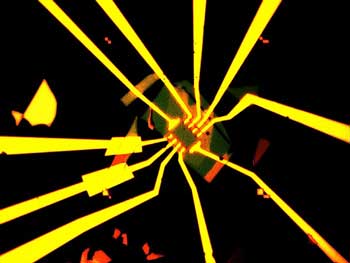 Engineers develop a clean, damage-free fabrication process that creates pristine transistors made from 2D material stacks.
Engineers develop a clean, damage-free fabrication process that creates pristine transistors made from 2D material stacks.
Microfluidic device may help researchers better understand metastatic cancer
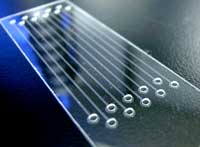 Instead of searching for a needle in a haystack, what if you were able to sweep the entire haystack to one side, leaving only the needle behind? That's the strategy researchers followed in developing a new microfluidic device that separates elusive circulating tumor cells from a sample of whole blood.
Instead of searching for a needle in a haystack, what if you were able to sweep the entire haystack to one side, leaving only the needle behind? That's the strategy researchers followed in developing a new microfluidic device that separates elusive circulating tumor cells from a sample of whole blood.
Nanocatalysts speed up the decomposition of chemical residues in contaminated water
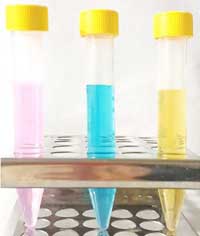 Using multiferroic nanoparticles, researchers have succeeded in inducing the decomposition of chemical residues in contaminated water. Here, the nanoparticles are not directly involved in the chemical reaction but rather act as a catalyst, speeding up the conversion of the substances into harmless compounds.
Using multiferroic nanoparticles, researchers have succeeded in inducing the decomposition of chemical residues in contaminated water. Here, the nanoparticles are not directly involved in the chemical reaction but rather act as a catalyst, speeding up the conversion of the substances into harmless compounds.
'Ant bridge'-inspired nanoparticle assembly fixes broken electrical circuits
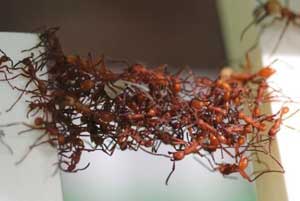 Inspired by the swarm behavior of ants, scientists have developed a nanoparticle self-assembly system that can fix broken electrical circuits.
Inspired by the swarm behavior of ants, scientists have developed a nanoparticle self-assembly system that can fix broken electrical circuits.
Subscribe to:
Comments (Atom)
